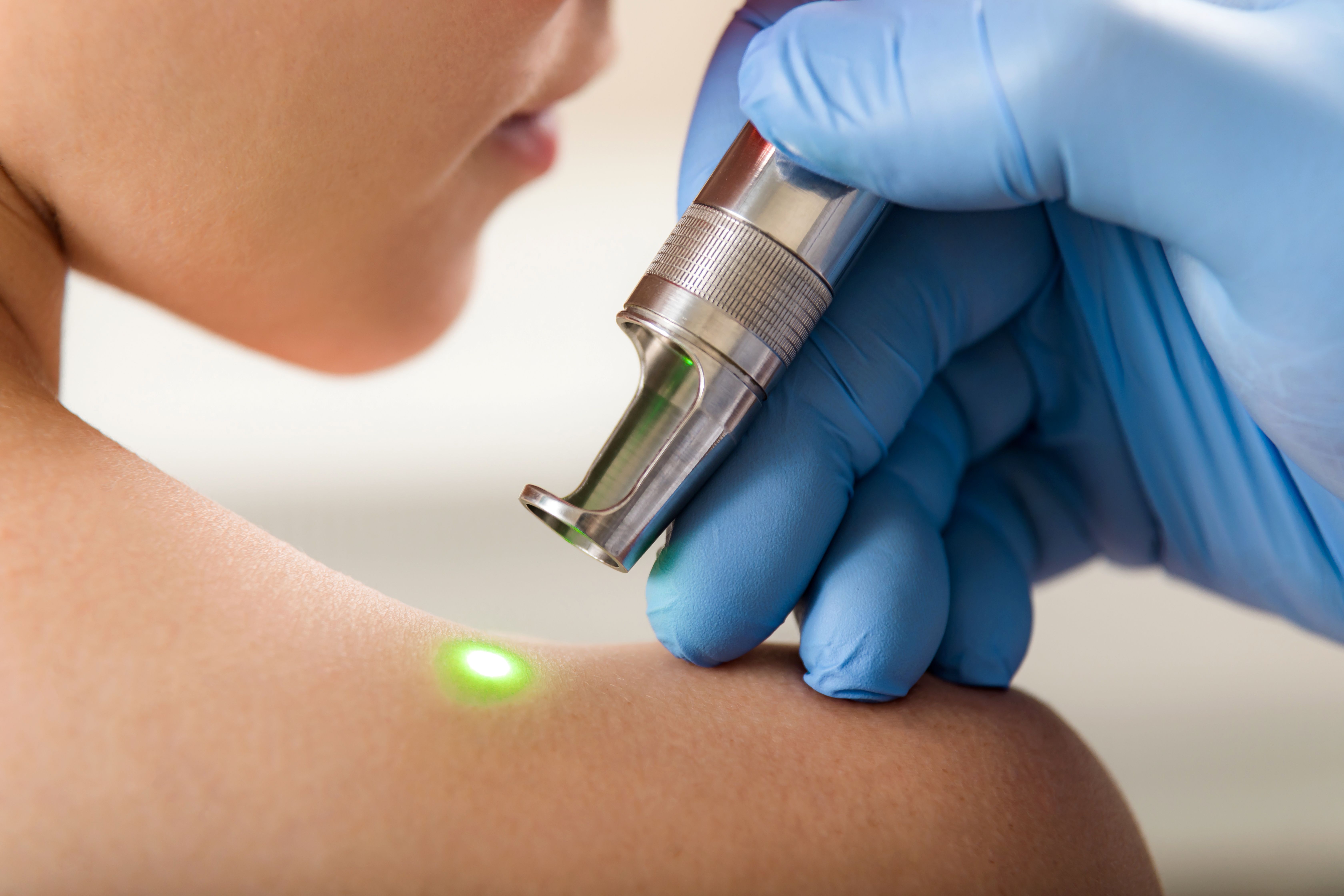- Acne
- Actinic Keratosis
- Aesthetics
- Alopecia
- Atopic Dermatitis
- Buy-and-Bill
- COVID-19
- Case-Based Roundtable
- Chronic Hand Eczema
- Drug Watch
- Eczema
- General Dermatology
- Hidradenitis Suppurativa
- Melasma
- NP and PA
- Pediatric Dermatology
- Pigmentary Disorders
- Practice Management
- Precision Medicine and Biologics
- Prurigo Nodularis
- Psoriasis
- Psoriatic Arthritis
- Rare Disease
- Rosacea
- Skin Cancer
- Vitiligo
- Wound Care
Article
5 Tips for more effective cosmeceutical results
Author(s):
These tips can help to improve patient results and compliance with cosmeceutical skin care regimens.
Dr. Leslie Baumann

The cosmeceuticals that dermatologists recommend to patients tend to work better when regimens are well thought out, according to Miami, Fla.,-based dermatologist Leslie Baumann, M.D.
Dr. Baumann, who chaired the Business of Skincare course earlier this year at the American Society for Dermatologic Surgery (ASDS) annual meeting in Phoenix, tells Dermatology Times these five tips can help improve results from dermatologist-recommended cosmeceutical regimens.
Tip 1. Everything patients put on their skin affects efficacy and potential side effects from other topical products or topical medications.
Product ingredients react chemically due to skin pH and more. This can impact barrier function and penetration. Some ingredients inactivate others while others increase the potency.
Anti-inflammatory ingredients and barrier repair moisturizers can help patients better tolerate other irritating skincare products such as benzoyl peroxides, according to Dr. Baumann.
An example of how one ingredient impacts another: hyaluronic acid (HA), an ingredient in many skincare topicals, increases penetration of other ingredients. This could result in side effects if patients are on, let’s say, acne medications or retinoids. Using an HA topical might result in too much of the acne medication penetrating the skin, causing redness, peeling or irritation, according to Dr. Baumann.
“Dermatologists need to take time to consider these interactions when designing a regimen,” Dr. Baumann says.
There are software programs that can help custom design optimal skincare regimens. Dr. Baumann developed the Skin Type Solutions Regimen Management Software available on STSfranchise.com, which about 120 dermatology and other practices in the U.S. use. The software diagnoses the Baumann Skin Type and generates a regimen that the physician can customize.
“The software takes into account all of the scientific issues when it generates a regimen making it very fast and easy for the doctor to prescribe an efficacious skincare regimen. The doctor chooses what brands to sell and the software generates the regimen based on those products,” she says.
Tip 2. Figure that patients will under-dose on their skincare regimen.
“Patients do not remember what you tell them, and studies show that 95% under-dose,” Dr. Baumann says.
That stat is according to a small study published in 2008 in the Journal of the American Academy of Dermatology looking at first-time patients’ use of topicals to treat dermatologic conditions.
Researchers have found that patient compliance tends to improve when dermatology practices give patients written instructions for how to use the skincare product or regimen. Steven R. Feldman, M.D., Ph.D., led a study suggesting that patients are more likely to use their medications around the time of their office visits. According to Dr. Baumann, if dermatologists or their staff members follow up with patients a few days to weeks after the office visit, patients will be more likely to adhere to their skincare regimen. The follow-up can be a text, phone call or office visit.
Tip 3. Include antiaging ingredients for patients older than 30.
Skincare regimens for patients older than 30 should include steps that patients can take to prevent skin aging. Sunscreen, ascorbic acid, antioxidants and retinoids can all be topically used to prevent skin aging. Dietary recommendations include decreasing sugar in the diet to prevent glycation and increasing consumption of foods high in antioxidants. Oral metformin might help with that, too, according to Dr. Baumann.
Dermatologists might not realize that mitochondrial DNA damage leads to skin aging, which is another reason to focus on antioxidants. Dermatologists should prevent and treat DNA and mitochondrial DNA damage orally and topically. Oral turmeric, topical niacinamide, DNA Repair enzymes and oral polypodium leucotomos (Heliocare, Ferndale) have been shown to help prevent DNA damage and encourage DNA repair, according to Dr. Baumann.
“Niacinamide, which is in a lot of products, can give the cells energy so they can repair their own DNA,” she says. “However, nothing has been found to repair mitochondrial DNA, so prevention of mitochondrial injury with sunscreen and antioxidants are our only options at this point.”
Tip 4. Remember, the most important “treatment product” needs to be closest to the skin on clean skin.
A treatment product is the product that is the most important one to treat the patient’s major concern.
“I find that a lot of derms are putting antiaging moisturizers and serums on the skin first and then putting the treatment product on top,” Dr. Baumann says. “An example of this is applying a rosacea medication on top of an antiaging moisturizer. It is important to consider the ingredients’ effects on the penetration of the other products - what’s most important to get into the skin.”
Dr. Baumann uses a set structure to develop regimens.
“I carefully consider the regimen steps and put the most important thing on step three, which is on clean skin,” she says.
Dr. Baumann explains that she uses the step 3 “treatment product” after first using the proper cleanser to prep the skin for the corresponding treatment product, which is followed by applying the eye product to protect the delicate eye area from the often irritating treatment product.
“The entire regimen should be designed to enhance penetration and efficacy of the treatment product, which may be a prescription medication or a cosmeceutical,” Dr. Baumann says. “The choice of cleanser and moisturizer greatly affect efficacy and side effects of the treatment product.”
Tip 5. Sell products in your practice to improve compliance.
The fewer steps required to start a skincare regimen, the more likely the patient will comply with the physician’s instructions, so Dr. Baumann believes dermatologists should retail products to make it easier for their patients to get started on the correct skincare regimens right away.
Patients are the most motivated when they have just seen the dermatologist, as the aforementioned Feldman SR’s study suggests. Dr. Baumann says that patients who buy their products directly from the dermatology practice have only one step to get started. However, patients who have to find their products online or in stores might have to go through multiple steps before being able to start the regimen, and multiple distractions along the way can weaken their resolve.
- Take the time to diagnose the patient’s skin type and concerns.
- Design the proper regimen for the patient’s needs.
- Consider the order that the products are applied.
- Give the patient written instructions.
- Offer the products for purchase in your office.
“These steps will help your patients achieve healthier skin. If you do not take the time to do this, it is more likely that someone with less training, knowledge and integrity will,” Dr. Baumann says.
For more on this topic, Dr. Baumann’s article “How to Use Oral and Topical Cosmeceuticals to Prevent and Treat Skin Aging” was published November 2018 in Facial Plastic Surgery Clinics.
Newsletter
Like what you’re reading? Subscribe to Dermatology Times for weekly updates on therapies, innovations, and real-world practice tips.















